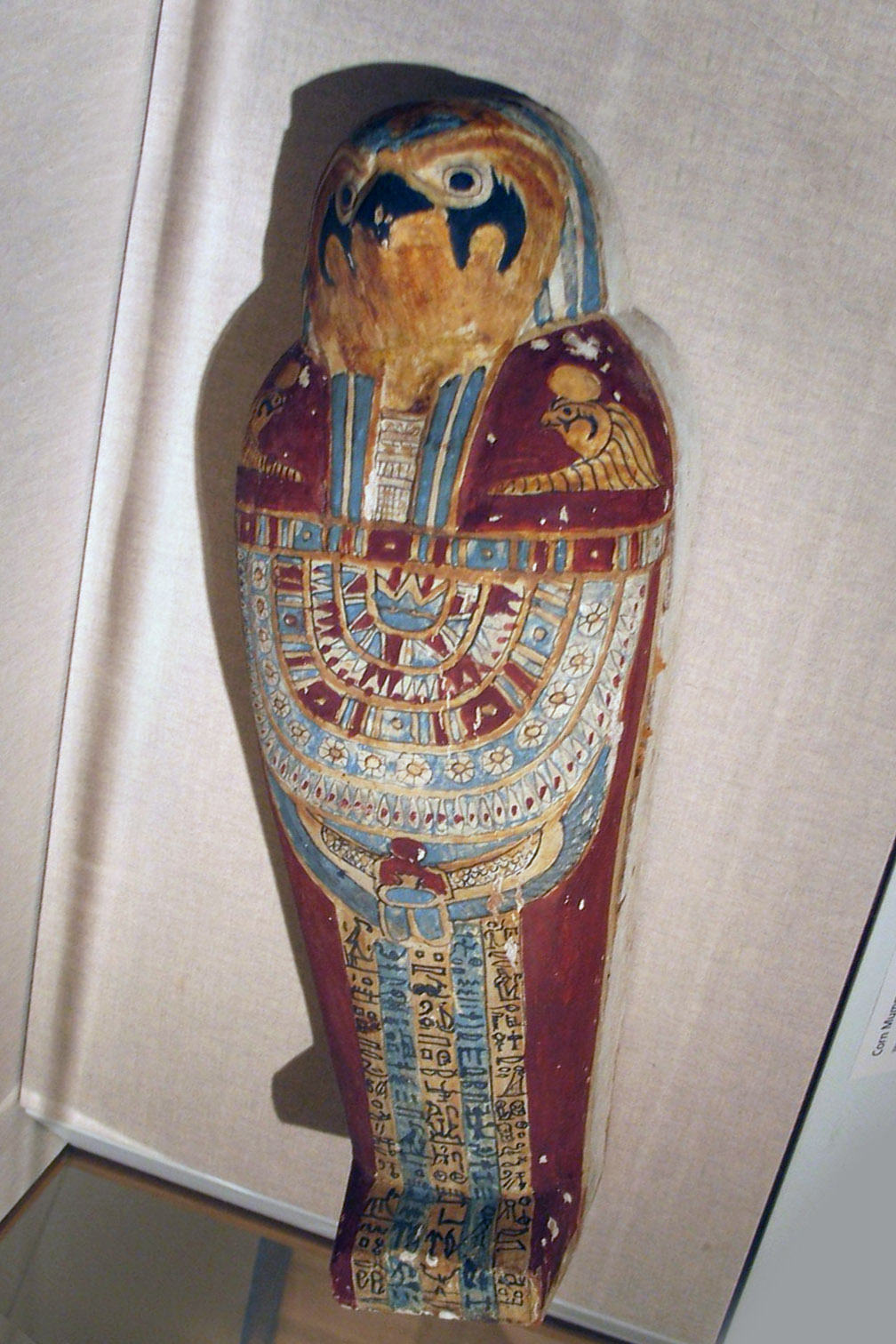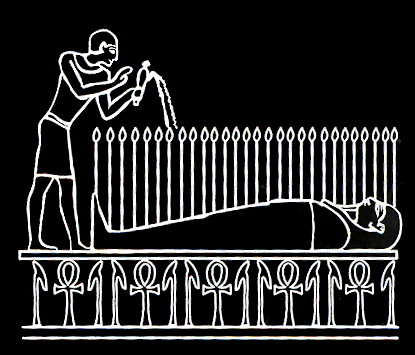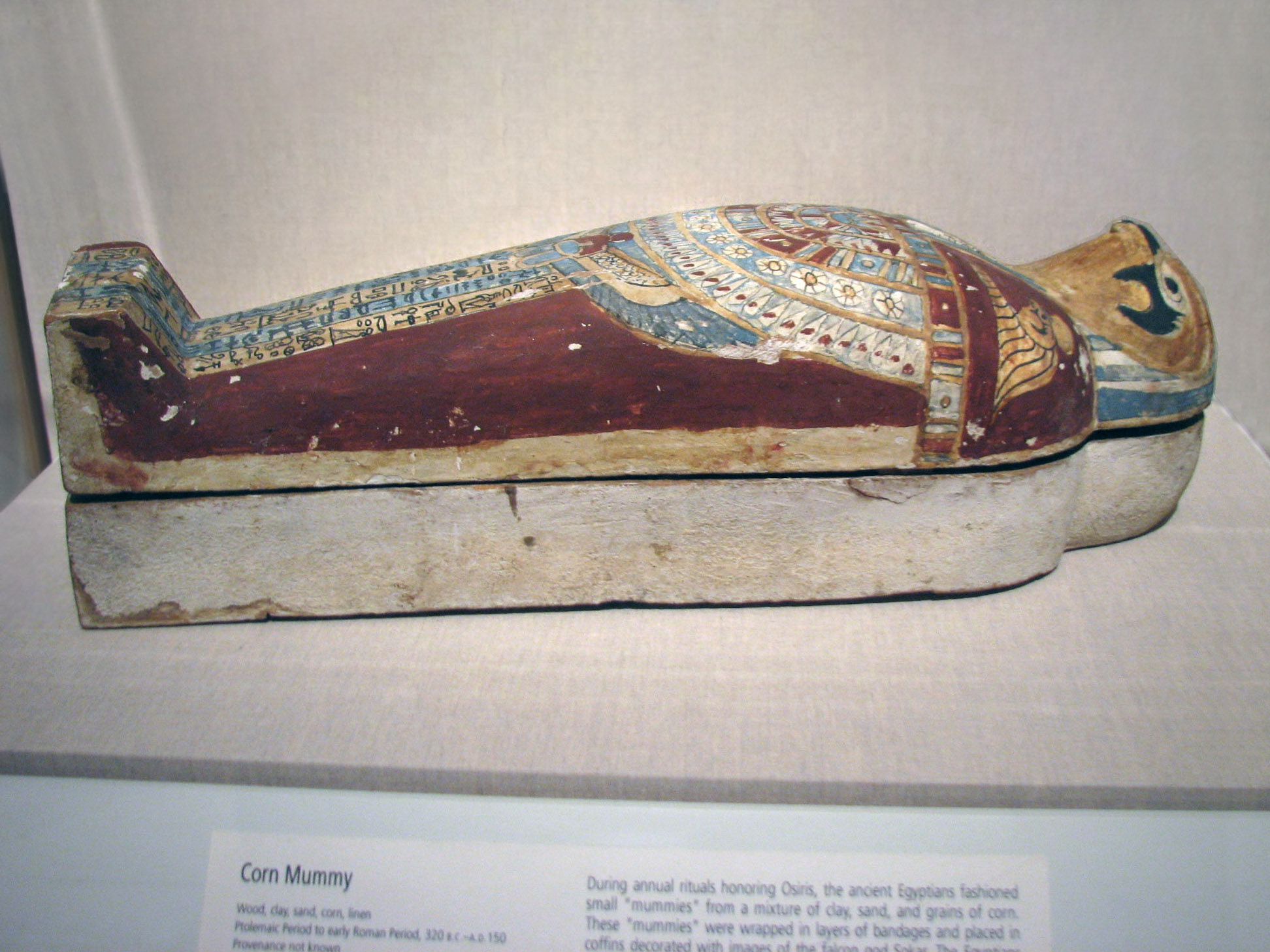a museum website photo:

And a Google-search has brought up further information:
Corn-mummies and Osirian statues
"The god Osiris was closely associated with vegetation, and particularly with
germinating grain. The emergence of young growth shoots from the fertile mud
of Egypt was regarded as a powerful metaphor for human resurrection, and this
notion was given physical form in Osirian images and figurines in which earth
and corn were basic constituents. Some royal tombs of the New Kingdom
contained an 'Osiris bed', a seed bed in a wooden frame or on a piece of
textile, made in the shape of Osiris. This bed was planted with barley, which
germinated in the tomb, symbolizing the renewal of life for the dead king via
the agency of Osiris. A similar concept underlay the creation of 'corn
mummies', figurines composed of earth or mud mixed with grains of barley and
fashioned into a miniature mummiform image of Osiris. These figures were
manufactured in an elaborate temple ritual during the month of Khoiak, and
then buried in areas with sacred associations..."
(_Death and the Afterlife in Ancient Egypt_, by John H. Taylor, page 212)
Maria Centrone summarizes: "In a word, corn-mummies were 'amulets of life' that shared with Osiris the same destiny of dying and coming to life again, thus assuring the renewal of the universal Order." (_Corn Mummies, Amulets of Life_, in Through a Glass Darkly:
Magic, Dreams and Prophecy in Ancient Egypt,
edited by Kasia Szpakowska, page 41)
Jan Assmann tells more about these 'rites of Khoiak':
"In Papyrus Jumilhac, a genuine 'priestly writing' in the biblical sense, which codifies all cultic knowledge regarding the eighteenth nome of Upper Egypt in a truly magnificent handwriting, the festival is called Khebes-Ta, 'Hacking up of the Earth,'..." (_Death and Salvation in Ancient Egypt_, by Jan Assmann, translated by David Lorton, page 363)

"Osirus with 28 stalks of wheat growing out of his coffin"
Moustafa Gadalla, Egyptian Mystics, page 87
which he got from the Temple of Isis at Philae
- Note the foundation of ankh and was scepters upon which Osirus and the attending Priest stand.





